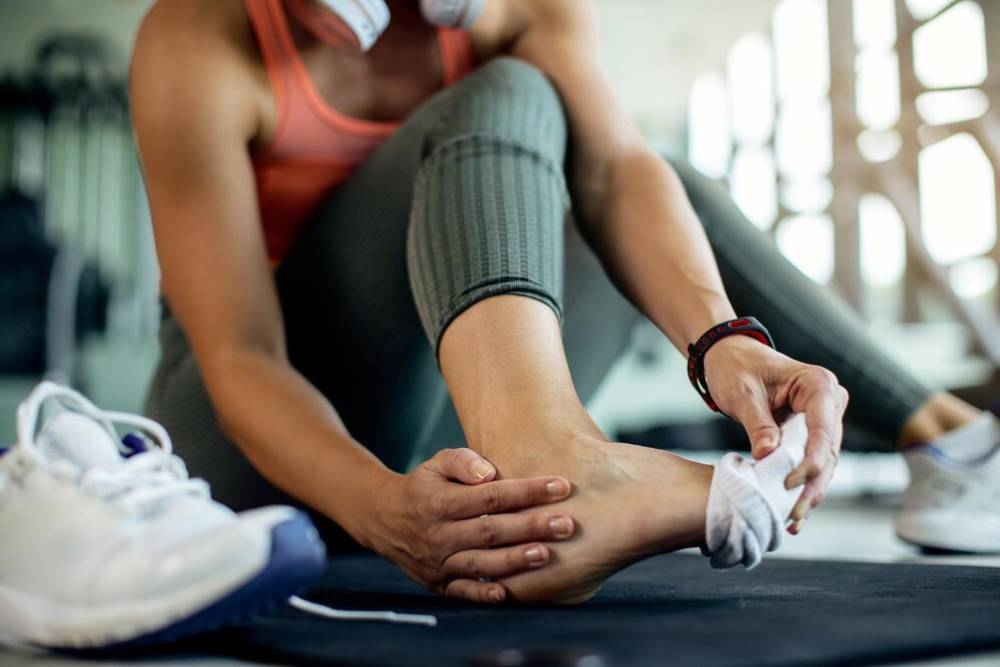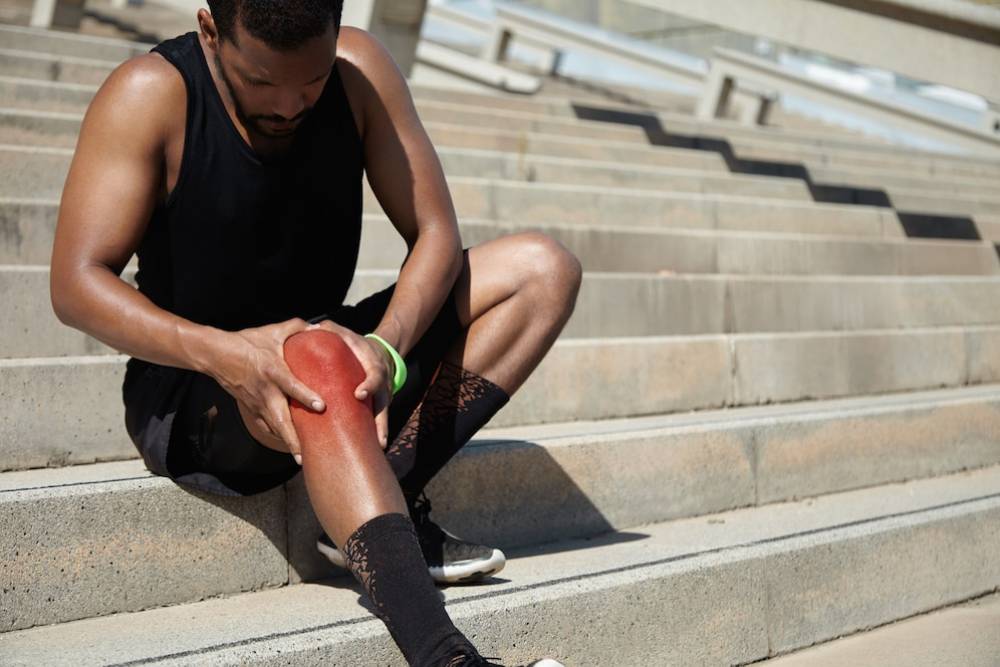
Common Workout Injuries and How to Avoid Them
Training hard is key to progress. But injuries can disrupt any fitness journey. Poor form, overtraining, and skipping recovery can cause injuries. This is true for both beginners and experienced athletes. Common injuries include strains, sprains, and joint problems. Injuries cause pain and slow progress. They may even force you to take time off from training. Luckily, most workout injuries can be prevented. Focus on proper technique, warm-ups, mobility work, and smart programming.
This article will cover:
- The most common workout injuries
- Their causes and symptoms
- Prevention strategies
- Recovery tips to get back on track
You can continue to improve without setbacks. Just learn how injuries happen and take steps to prevent them.
Common Workout Injuries and How They Happen
1. Muscle Strains (Pulled Muscles)

What It Is:
A strain happens when a muscle gets overstretched or torn. This can occur from too much force or improper movement. This can happen during weightlifting, sprinting, or dynamic movements.
Symptoms:
- Sudden pain or tightness
- Swelling or bruising
- Difficulty moving the affected muscle
Causes:
- Lifting too heavy without proper form
- Skipping warm-ups
- Overuse or fatigue
How to Prevent It:
- Warm up properly with dynamic stretches and light cardio.
- Increase weights gradually and focus on controlled movements.
- Prioritise flexibility and mobility with regular stretching.
2. Sprained Ankles

What It Is:
A sprain happens when the ligaments around a joint get stretched or torn. This usually occurs from quick twisting movements. This is common in running, jumping, and agility drills.
Symptoms:
- Swelling and bruising around the ankle
- Pain when bearing weight
- Reduced range of motion
Causes:
- Improper landing mechanics
- Weak ankle stability
- Exercising on uneven surfaces
How to Prevent It:
- Strengthen ankle muscles with balance and stability exercises.
- Wear proper footwear with good support.
- Be mindful of landing mechanics during jumps.
3. Shoulder Injuries (Rotator Cuff Strains, Impingements, Dislocations)
What It Is:
The shoulder joint is very flexible, but it can get hurt easily. This often happens because of repetitive stress, limited mobility, and bad lifting methods.
Symptoms:
- Pain when raising the arm
- Weakness in the shoulder
- Clicking or popping sensations
Causes:
- Overuse from pressing exercises (bench press, shoulder press)
- Poor posture and weak stabilising muscles
- Lifting with improper form
How to Prevent It:
- Strengthen the rotator cuff with targeted exercises like external rotations.
- Maintain proper shoulder mobility through stretching and foam rolling.
- Avoid excessive overhead lifting if experiencing discomfort.
4. Knee Injuries (Tendonitis, ACL Tears, Meniscus Injuries)

What It Is:
Knee injuries are common in running, jumping, and squatting exercises. Weak stabilising muscles or bad movement patterns stress the knee joint too much.
Symptoms:
- Pain around the kneecap or inside the knee
- Swelling and stiffness
- Difficulty bending or straightening the leg
Causes:
- Weak quadriceps and hamstrings
- Poor squat form (knees caving in)
- Sudden changes in direction during sports
How to Prevent It:
- Strengthen the surrounding muscles (quads, hamstrings, glutes).
- Use proper squat mechanics (knees tracking over toes).
- Warm up with dynamic stretches before lower-body workouts.
5. Lower Back Pain and Injuries (Herniated Discs, Strains, Sciatica)
What It Is:
Lower back injuries usually come from bad lifting, weak core muscles, or too much strain on the spine.
Symptoms:
- Sharp or aching pain in the lower back
- Limited mobility or stiffness
- Pain radiating down the legs (sciatica)
Causes:
- Lifting with improper spinal alignment
- Weak core muscles failing to stabilise the spine
- Excessive sitting leads to tight hip flexors
How to Prevent It:
- Use proper deadlift and squat form (neutral spine, engaged core).
- Strengthen the core with exercises like planks and bird dogs.
- Stretch the hip flexors to prevent tightness.
6. Wrist and Elbow Injuries (Tendonitis, Carpal Tunnel, Golfer’s/Tennis Elbow)
What It Is:
Wrist and elbow injuries usually happen due to repetitive stress, heavy lifting, and poor wrist position.
Symptoms:
- Pain in the wrist or forearm
- Weak grip strength
- Tingling or numbness in the fingers
Causes:
- Overuse from pulling and pushing movements
- Poor wrist positioning during exercises
- Excessive keyboard use leads to tight forearm muscles
How to Prevent It:
- Strengthen grip and forearm muscles with exercises like wrist curls.
- Use wrist wraps for added support during heavy lifts.
- Stretch and mobilise the wrists regularly.
General Strategies to Avoid Workout Injuries
1. Warm Up and Cool Down Properly
- Spend at least 5-10 minutes warming up before workouts.
- Use dynamic stretches to prepare the muscles.
- Finish with static stretching and foam rolling to aid recovery.
2. Use Proper Form
- Focus on technique over weight—lifting heavy with bad form increases injury risk.
- Record yourself to check the form and seek professional coaching if needed.
3. Progress Gradually
- Increase weight, reps, or intensity by no more than 5-10% per week.
- Avoid sudden jumps in difficulty, which can strain muscles and joints.
4. Strengthen Supporting Muscles
- Weak stabilising muscles increase injury risk.
- Include core training and joint stability exercises in your routine.
5. Allow for Proper Recovery
- Take at least 1-2 weekly rest days to allow muscle repair.
- Get 7-9 hours of quality sleep per night to aid recovery.
- Stay hydrated and follow a nutrition plan rich in protein to support healing.
6. Listen to Your Body
- Pain is a warning sign—stop immediately if you feel sharp pain.
- If soreness lasts longer than 72 hours, reduce intensity or take extra rest.
What to Do If You Get Injured
Even with the best prevention, injuries can still happen. If you experience pain or discomfort:
- Rest the affected area and avoid aggravating movements.
- Apply ice and compression to reduce swelling.
- Perform gentle mobility work to maintain range of motion.
- Seek professional help if the pain persists beyond a few days.
Ignoring injuries can lead to chronic problems, so always prioritise recovery.
Conclusion: Common Workout Injuries and How to Avoid Them
Workout injuries can delay progress and lead to frustration. Most injuries can be avoided with smart training habits. Focus on warm-ups, maintaining proper form, progressing slowly, and using recovery strategies. This will help keep you injury-free.
Key Takeaways:
- Muscle strains, sprains, problems with the shoulder and knee, and lower back pain are common injuries.
- Prevention strategies include proper warm-ups, technique, mobility work, and gradual progression.
- Rest, recovery, and listening to your body are essential for long-term fitness success.
Train wisely and listen to your body. This will help you build strength and endurance without setbacks. Stay safe, and keep progressing!